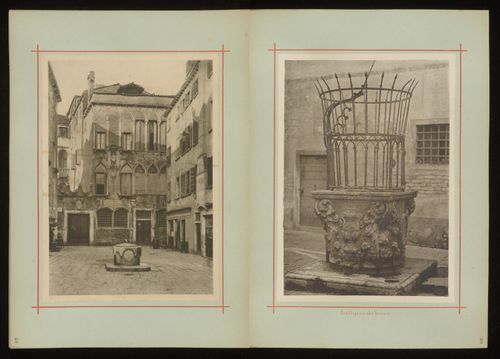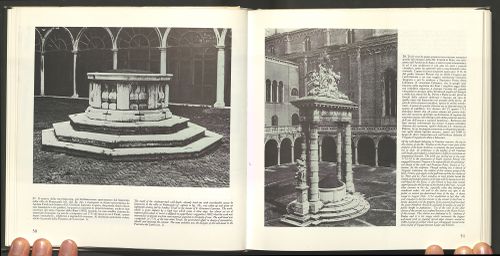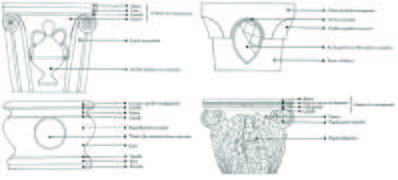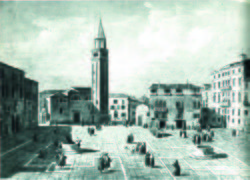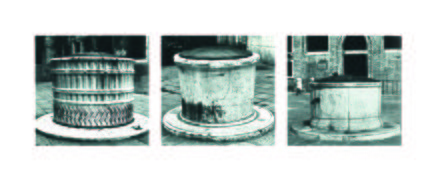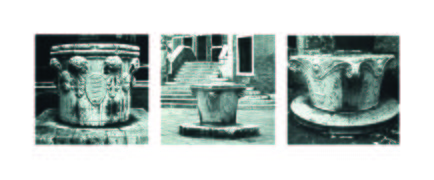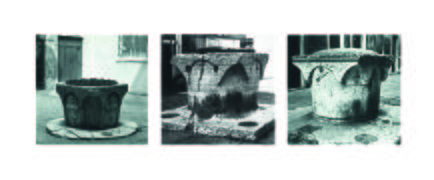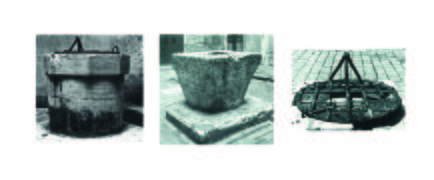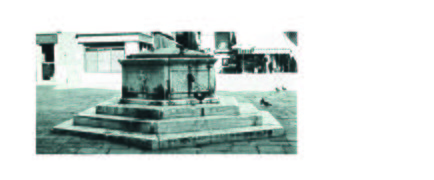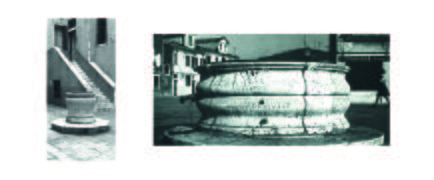3DVeniceWellheads
Motivation
Venice is one of the cities in Europe with the richest and largest number of well-heads, locally known as Vere da Pozzo. This term refers to the stone structure surrounding the pipe of a well with a protective function. Across history, the role of wells for Venice has always been crucial, in first place to assure drinking water for citizens. Although on water, the city needed wells to store unsalted water. They were placed most of the time in the middle of a square or a private courtyard to collect rainwater and filter it in the ground. In times of drought, they were filled with fresh water from the nearby Brenta river.
Over time, the need and societal use of wells evolve along society. Once more than 6000 across all Venice, it is today estimated that more than 2300 well-heads are spread across the city. To better understand these changes, the goal of this digital humanities project is thus to dizitize well-heads and thus provide additional material to upgrade the Venice 1808 digital Cadaster in development at the epfl DH lab.
The project uses the book Vere da Pozzo by Alberto Rizzi with circa 250 references of well-heads in the wider Venice islands. It lists photos, description of conservation, periods of construction, material, and overall dimensions. It is complemented with the GPS locations of well-heads in Venice available here.
The material available limits the level of detail one can extract through digitization. Some wells are badly preserved and most of the time, only one photograph is provided. Pictures of well-heads are similar to a profile point of view but vary case by case. However, the material is good enough to give clear indications of the overall shape and the style adopted. The architectural styles of well-heads are thus the key elements to be successfully digitized in this project. It takes the form of 3D models semi-automatically generated out-of-the-book pictures. The reader could expect to recognize arches, geometrical symmetries, overall size, and molding styles as differentiating elements of Venetian well-heads. Detailed sculptures won't be reproduced.
Deliverables
The deliverables are available on Github. Here are the main elements:
The tools:
- Rhino Grasshopper script to model well-heads with arches, mouldings, and varying polygonal slabs.
- Rhino Grasshopper script to extract the dimensions and store them into a JSON file.
- Localization tool to match all the known GPS location of well heads with the ones of the book.
The results:
- Scanned images of Vere da Pozzo by Alberto Ricci.
- Digitized well-heads in 3D model as .fbx files.
- Associated rendered images of the 3D models.
- Associated JSON files with the dimensions of each well-head.
- A comprehensive catalog with reference to each well-heads with GPS location, district, square, name, date, material, height, diameter, 3D model, rendered image, and page location in Vere da Pozzo.
Project Plan
The project is separated in three main goals: identify the historical document to use, develop the digitization methods and finally perform the digitization. The following table provides the project plan.
| Date | Task | Completion |
|---|---|---|
| By Week 3 |
|
✓ |
| By Week 4 |
|
✓ |
| By Week 5 |
|
✓ |
| By Week 6 |
|
✓ |
| By Week 7 |
|
✓ |
| By Week 8 |
|
✓ |
| By Week 9 |
|
✓ |
| By Week 10 |
|
✓ |
| By Week 11 |
|
✓ |
| By Week 12 |
|
✓ |
| By Week 13 |
|
✓ |
| By Week 14 |
|
✓ |
Methodology
The Venetian wells are magnificent, feature beautiful sculptures and pose a great challenge to digitize in 3D. Some project model buildings with photogrametric technics. The availability of aerial videos provides multiple viewing angles and offer thus the possibility to use computer intensive algorithms and a mostly automated approach. This is not the case with well-heads, and it, therefore, asks us to adopt a different strategy.
Few documents provide a comprehensive and systematic approach to the reproduction of well-heads. One of them is Raccolta delle vere da pozzo by Ferd. Ongania published in 1889. It is the oldest and first one to reproduce well-heads with photography. It looks like a great photo album: quality photographs with names and places. The photo are adequate for modeling, however, they lack detailed metadata such as height to calibrate the 3d models. That's why the project selected a more recent catalog, Alberto Rizzi's book. It features a smaller number of well heads but with the metadata required. Below, two images of Ongania and Rizzi's books.
Typologies and procedural modeling To model a well-head, one ideally needs to get a perspective of all viewing angles. In this case, only one picture from the side is given. The modelization then takes into consideration additional information and compensates for this information asymmetry. The well-head is symmetric and features specific architectural styles. The goal is to identify the most basic typologies of wells with basic geometric shapes and use them to model a simple shape of each well with Rhino Grasshopper.
Common typologies of wells in Venice:
- Base with circular, square, hexagonal, octagonal, decagonal (10), dodecagonal (12) shapes.
- Top with circular, square, hexagonal, octagonal, decagonal (10), dodecagonal (12) shapes.
- Edges are either sharp or embedding a sculpture that cut them.
- Well-heads rest on a slab with one, two or three steps.
- Top 10-15cm of the well either have flanges with square or circular profiles or arcades
The following illustrations come from the book Vere Da Pozzo Di Venezia, Alberto Rizzi, La Stamperia Di Venezia Editrice, 1981. Rizzi already identified typologies and this project focuses on the first three, discarding the one with sculptures. These typologies can now be modeled semi-automatically by using Rhino Grasshopper and implementing a dimension extraction script and a procedural modeling script.
Extract well-heads dimensions
Procedural modeling of well-heads The idea behind a procedural model is to provide some basic geometrical properties and use them to reconstruct a 3D model. In our case, each well-head is split into slabs with different profiles. When stacked together, this looks like a well-head. The challenge is thus to use the photographs to extract the height, radius, and profile of each slab. Then create a script to model the same slabs in 3D and stack them back together. The model includes the possibility to model the selected typologies and in this case it involves to model 4 types of slabs. They are
The procedure goes as follow:
- Read a JSON file with dimensions for each slab. Each slab contains the moulding type, the base radius, the top radius, the base polygon, the top polygon, the base height, the top height, and a scaling factor (=1).
- Generate each slab according to the JSON file.
- Fine tune some parameters.
Localize well-heads
Classification by stylistic appearance and historical period:
| Type | Period | Features |
|---|---|---|
| Archeological | Greek and Roman | Rough, made from column shafts, altars, memorial stones, cinerary urns and other pieces. |
| Carolingian | VIII-X centuries | Cubic, decorated with symbols of Christian art |
| Venetian-Byzantine | XI-XIII centuries | Free-standing cylinder decorated with pillars or columns |
| Gothic | XIV-XV centuries | Like capitals of columns or pillars, with square frame |
| Traditional | from 1300 | Cylindrical shaft with small arches in the corners |
| Lombardesque | late XV-early XVI centuries | Modelled like columns capitals |
| Renaissance | mid XV-mid XVI centuries | Polygonal shape with figures in the lateral boxes |
| Baroques | XVI-XVIII centuries | Double swelling in the middle |
| Neoclassical | XVIII-XIX centuries | Very simple cylindrical structure |
Results
Future work
- scan a sample of representative wells, perspectives : 1h
- design a grasshopper code to generate json out of the images: 5h
- scan the book as PDF or as a set of JPG: 5h
- generate the JSONs: 16h
- classify the well-heads of the book ?h

